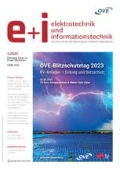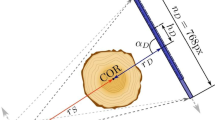Summary
Diagnostic and operational tasks in dentistry require three-dimensional (3D) information about tissue. A novel type of low dose dental 3D X-ray imaging is considered. Given projection images taken from a few sparsely distributed directions using the dentist's regular X-ray equipment, the 3D X-ray attenuation function is reconstructed. This is an ill-posed inverse problem, and Bayesian inversion is a well suited framework for reconstruction from such incomplete data. The reconstruction problem is formulated in a well-posed probabilistic form in which a priori information is used to compensate for the incomplete data. A parallelized Bayesian method (implemented for a Beowulf cluster computer) for 3D reconstruction in dental radiology is presented (the method was originally presented in (Kolehmainen et al., 2006)). The prior model for dental structures consists of a weighted l 1 and total variation (TV)-prior together with the positivity prior. The inverse problem is stated as finding the maximum a posterior (MAP) estimate. The method is tested with in vivo patient data and shown to outperform the reference method (tomosynthesis).
Zusammenfassung
Diagnostische und operative Zahnmedizin erfordert dreidimensionale (3D) Gewebeinformation. In diesem Beitrag wird eine neue Art der schwachdosierten 3D-Röntgentomografie untersucht. Die Rekonstruktion der 3D-Dämpfungsverteilung erfolgt aus nur wenigen Projektionen, die mit handelsüblichen Röntgenapparaten aufgenommen werden. Das inverse Problem ist als Bayes'sches Schätzproblem formuliert, in dem a priori Information zur Kompensation der unvollständigen Messdaten berücksichtigt wird. Zur Lösung des inversen Problems wird eine parallelisierte Bayes'sche Methode für 3D-Röntgentomografie (implementiert für einen Beowulf-Rechencluster) vorgeschlagen. Diese Art der Rekonstruktion wurde in (Kolehmainen et al., 2006) präsentiert. Das verwendete A priori-Modell besteht aus einer Kombination einer gewichteten (l1-prior, einer total variation (TV) prior und einer Positivitätsprior. Das inverse Problem kann als Suche nach dem Maximum a posterior (MAP)-Zustand betrachtet werden. Die vorgeschlagene Methode wird anhand von In vivo-Patientendaten getestet und zeigt eine signifikante Verbesserung gegenüber der üblichen Methode (tomosynthesis).
Similar content being viewed by others
References
Balay, S., Buchelman, K., Eijkhout, V., Gropp, W. D., Kaushik, D., Knepley, M. G., McInnes, L. C., Smith, B. E., Zhang, H. (1995): PETSc Users Manual. Argonne National Laboratory ANL-95/11, revision 2.1.5 edition.
Barzilai, J., Borwein, J. M. (1988): Two point step size gradient method. IMA J. Numer. Anal. 8: 141–148.
Bouman, C., Sauer, K. (1993): A generalized Gaussian image model for edge-preserving MAP estimation. IEEE Trans. Image Processing 2: 296–310.
Brocklebank, L. (1997): Dental Radiology – Understanding the X-ray Image: Oxford University Press. ISBN 0-19-262411-3.
Dobson, D. C., Santosa, F. (1994): An image enhancement technique for electrical impedance tomography. Inv. Probl. 10: 317–334.
Dobson, D. C., Santosa, F. (1996): Recovery of blocky images from noisy and blurred data. SIAM J. Appl. Math. 56: 1181–1198.
Donoho, D. L., Johnstone, I. M., Hoch, J. C., Stern, A. S. (1992): Maximum entropy and the nearly black object. J. Roy. Statist. Ser. B 54: 41–81.
Ekestubbe, A., Gröndahl, K., Gröndahl, H.-G. (1997): The use of tomography for dental implant planning. Dentomaxillofacial Radiology 26: 206–213.
Fiacco, A. V., McCormick, G. P. (1990): Nonlinear programming: sequential unconstrained minimization techniques. SIAM.
Frese, T., Bouman, C., Sauer, K. (2002): Adaptive wavelet graph model for Bayesian tomographic reconstruction. IEEE Trans. Image Processing 11: 756–770.
Gropp, W., Lusk, E., Doss, N., Skjellum, A. (1996): A high-performance, portable implementation of the MPI message passing interface standard. Parallel Computing 22: 789–828.
Hanson, K. M. (1987): Bayesian and related methods in image reconstruction from incomplete data. Image Recovery: Theory and Applications. Academic, Orlando.
Hanson, K. M., Cunningham, G. S., McKee, R. (1997): Uncertainty assessment for reconstructions based on deformable geometry. Int. J. Imaging Syst. Technol. 8: 506–512.
Hanson, K. M., Wecksung, G. W. (1983): Bayesian approach to limited-angle reconstruction in computed tomography. J. Opt. Soc. Am. 73: 1501–1509.
Kaipio, J. P., Somersalo, E. (2004): Statistical and Computational Methods for Inverse Problems. Number 160 in Applied Mathematical Sciences. New York: Springer. ISBN: 0-387-22073-9.
Kolehmainen, V., Siltanen, S., Järvenpää, S., Kaipio, J. P., Koistinen, P., Lassas, M., Pirttila, J., Somersalo, E. (2003): Statistical inversion for medical X-ray tomography with few radiographs II: Application to dental radiology. Phys. Med. Biol. 48: 1465–1490.
Kolehmainen, V., Vanne, A., Siltanen, S., Järvenpää, S., Kaipio, J. P., Lassas, M., Kalke, M. (2006): Parallelized Bayesian inversion for three-dimensional dental X-ray imaging. IEEE Trans. Med. Im. 25: 218–228.
Mosegaard, M., Sambridge, M. (2002): Monte Carlo analysis of inverse problems. Inv. Probl. 18: R29–R54.
Natterer, F. (1986): The Mathematics of Computerized Tomography. Chichester, USA: John Wiley & Son.
PaloDEx Group (Finland) (2007): Volumetric Tomography, [Online], Available at http://www.instrumentariumdental.com/
Ramesh, A., Ludlow, J. B., Webber, R. L., Tyndall, D. A., Paquette, D. (2002): Evaluation of tuned-aperture computed tomography in the detection of simulated periodontal defects. Oral and Maxillofacial Radiology 93: 341–349.
Ranggayyan, R. M., Dhawan, A. T., Gordon, R. (1985): Algorithms for limited-view computed tomography: an annotated bibliography and a challenge. Appl. Opt. 24: 4000–4012.
Raydan, M. (1997): The Barzilai and Borwein gradient method for the large scale unconstrained minimization problem. SIAM J. Optim. 7: 26–33.
Sauer, K., James, S. Jr., Klifa, K. (1994): Bayesian estimation of 3-D objects from few radiographs. IEEE Trans. Nucl. Sci. 41: 1780–1790.
Siltanen, S., Kolehmainen, V., Järvenpää, S., Kaipio, J. P., Koistinen, P., Lassas, M., Pirttila, J., Somersalo, E. (2003): Statistical inversion for medical X-ray tomography with few radiographs I: General theory. Phys. Med. Biol. 48: 1437–1463.
Sterling, T., Savarese, D., Becker, D. J., Dorband, J. E., Ranawake, U. A., Packer, C. V. (1995): BEOWULF: A parallel workstation for scientific computation. In Proc. 24th Int. Conf. on Parallel Processing, number I.
Webber, R. L., Horton, R. A., Tyndall, D. A., Ludlow, J. B. (1997): Tuned aperture computed tomography (TACT). Theory and application for three-dimensional dento-alveolar imaging. Dentomaxillofacial Radiology 26: 53–62.
Webber, R. L., Messura, J. K. (1999): An in vivo comparison of diagnostic information obtained from tuned-aperture computed tomography and conventional dental radiographic imaging modalities. Oral Surgery Oral Medicine Oral Pathology 88: 239–247.
Whaley, R. C., Petitet, A., Dongarra, J. J. (2001): Automated empirical optimization of software and the ATLAS project. Parallel Computing 27: 3–35.
Yu, D. F., Fessler, J. A. (2002): Edge-preserving tomographic reconstruction with nonlocal regularization. IEEE Trans. Med. Imag. 21: 159–173.
Zheng, J., Saquib, S. S., Sauer, K., Bouman, C. A. (2000): Parallelizable Bayesian tomography algorithms with rapid, quaranteed convergence. IEEE Trans. Image Processing 9: 1745–1759.
Author information
Authors and Affiliations
Rights and permissions
About this article
Cite this article
Kolehmainen, V., Vanne, A., Siltanen, S. et al. Bayesian inversion method for 3D dental X-ray imaging. Elektrotech. Inftech. 124, 248–253 (2007). https://doi.org/10.1007/s00502-007-0450-7
Received:
Accepted:
Issue Date:
DOI: https://doi.org/10.1007/s00502-007-0450-7




